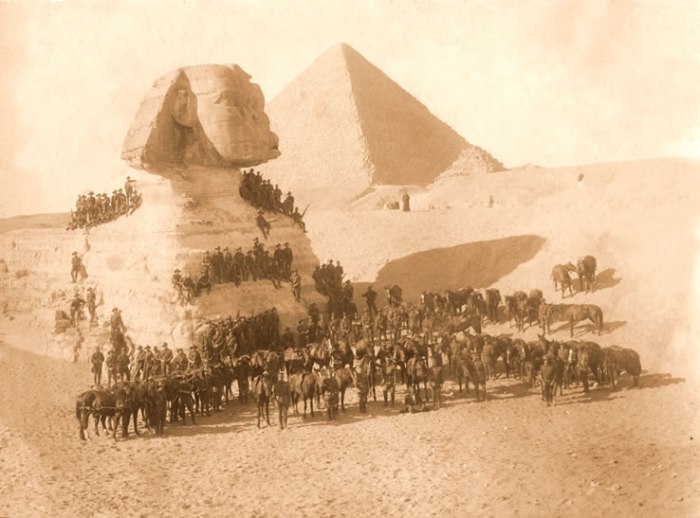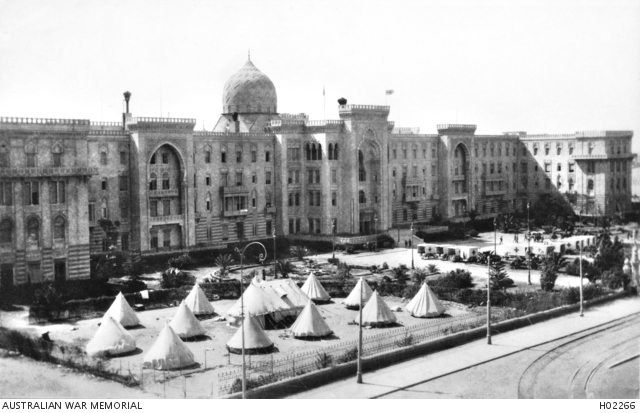
204 Patrick Finn Walshe
204 Patrick Finn Walshe was born in Tralee, County Kerry in Ireland in 1889. His parents were Ellen and William Walshe. Patrick also had an older sister, Mary.
His mother had married a second time to John O’Brien and Patrick became part of an extended family as early as 1901 when he was 13 years old.
There is uncertainty as to when Patrick left Ireland and under what circumstances, but when most Irish immigrants were heading for Boston or New York in the USA, Patrick decided on Australia.
When Patrick enlisted he had been working as a plumber and gas fitter and living in Paddington NSW, enlisting on the 5th September 1914.
His mother was recorded as his next of kin as Mrs O’Brien living at Tralee, Kerry Ireland.
His mother would later recall that Patrick ….“had trained in Egypt,… from Egypt went to the first landing at Dardanelles and was thrown into the water and picked up by another regiment….. heavily engaged against the Turks and got severely wounded in the back”
Four days after the landing at Gallipoli, Patrick had in fact fractured his ribs and was shipped out on 29th April to the 1st Australian General Hospital Heliopolis, Egypt.

After he recovered Patrick returned to his unit at Gallipoli only to contract Pleurisy in July. He was invalided back to Malta on the H.S Gascon and then onward to England to No. 4 London General hospital.
After recovering from Pleurisy he returned to the 27th draft of Engineering Reinforcements at Weymouth England in late March 1916.
Patrick was taken on strength and rejoined his original unit the 1st FCE in France on the 17th August 1916.
Patrick continued having a tough time with his health and within a few months on the front line he was admitted to hospital on two more occasions suffering with carbuncles, and defective teeth .
On the 19th January 1917 the 1st Field Company had left the Somme and marched at intervals towards Bazentin. According to original 213 Roy Denning the camp was situated on the left of Longueval and not far from Pozieres.
In his book ‘Anzac Digger’ 213 Roy Denning details how the men were housed in “Nissen Huts” and he “found it hard to believe that they would be allowed to remain in a camp of this description while working in the line”- 213 Roy Denning

The conditions were extreme , Roy Denning describing that “France had given exhibitions of rain, snow, hail, wind and mud and put up very credible performances- now we had frosts…..everything freezable was frozen…. bread glistened and resisted the knife”- 213 Roy Denning

Patrick Walshe returned to the unit and the extreme conditions in France on the 13th February 1917.
On the 25th February 1917 at Yarra Bank Patrick Finn Walshe was seriously wounded with shell wounds to his chest and buttocks.
This day was recorded by the originals as………………………….
“one of the most disastrous events which occurred to the company during the whole war as four of these sappers died later on , namely, 204 Walshe, 124 Garrett, Banks and Donohue.”
213 Roy Denning describes the activities of the day as proving to be hard and dangerous , having a number of infantry men assisting they had to dig a communications trench to the advanced position. It wasn’t long before German snipers starting picking men off.
At this point Roy Dennings section was meant to be relieved at 5 pm but as Roy describes it… ” a shell intervened”
The citation for original 96 Hugh Geddes also details the events on the 25th February 1917….
“At le Bargue early on the morning of the 25th February 1917, L/Cpl. Geddes was detailed to take out a party of sappers , and assist the infantry who were said to be constructing a strong point at M.a8.a 8.0 , which was then an outpost well in advance of our new front line. He led his party to the job, over ground which had not been cleared of snipers and other detached parties of the enemy, got the work in hard and led his party back as he was instructed. Later in the day he was accompanying a relief which was going out on the right. They met at an enemy barrage near the YARRA BANK, and one shell caused eight casualties among them…..L/Cpl GEDDES did excellent work in rendering first aid.” – Source AWM
The short account as prepared by the members of the 1st FCE also gives their account of the 25th February 1917……
“On Sunday the 25th February 1917 eleven sappers (including two L/Cps and A.M.O Watson under L/Cp McLintock of No.1 sect. when on approaching Yarra bank which the enemy was shelling heavily, a rush was made to the Shelter of Yarra bank and its deep dugouts, unfortunately one shell landed amongst them which caused 8 casualties.
Sapper Skow, No. 1 Sect. killed. Sappers Banks and Donohue No.2 Sect. badly wounded as were Sappers Walshe and Garrett and L/Cp, McLintock, and slightly wounded Sappers Goodwin and Newton, all of No.1 Sect.
Those who were not wounded, L/Cp Geddes, Sappers Geldart and Passfield No.2 Sect. L/Cp Slee No.1 sect and the A.M.O Watson.”
Patrick along with fellow sapper 124 Sidney Garrett also seriously wounded , were both transferred to the 45th Casualty clearing station in France
Spr. 204 Patrick Walshe later died of wounds on the 5th March 1917. He was buried at the Dernancourt Communal Cemetery Extension.

Patrick was a Roman Catholic, a deeply religious man as could be seen by his personal effects that had been returned to his mother. Among his effects were 4 religious charms, 5 religious cloth symbols, 2 Rosaries, a crucifix, 7 religious medals and a religious book.


Patrick shortly after his death was also mentioned in the honour roll of the ‘ANZAC Bulletin’ a Publication in London England.
A portrait of Patrick Finn Walshe does exist, however he is only named in a group photo. Which one is Patrick is not known at this stage or the identities of the other Engineers from the 1st Field Company captured in the same photo.
This photo can be viewed and is AWM copyright protected. The photo is from Thuillier Collection of glass plate negatives taken by Louis and Antoinette Thuillier in Vignacourt, France during the period 1916 to 1918.
The image is available to view at the following link https://www.awm.gov.au/collection/P10550.219
Story ©Vance Kelly 2017
Sources:
‘Anzac Digger’ – An Engineer in Gallipoli & France- Roy & Lorna Denning – (Compulsory Reading available on Ebay)
AWM145 Roll of Honour cards, 1914-1918 War, Army
The Lost Diggers of Vignacourt – The Australian War Memorial’s exhibition Remember me: the lost diggers of Vignacourt showcases 74 photographs specially hand-printed in the Memorial’s darkrooms from the original glass-plate negatives.
NAA, NLA




